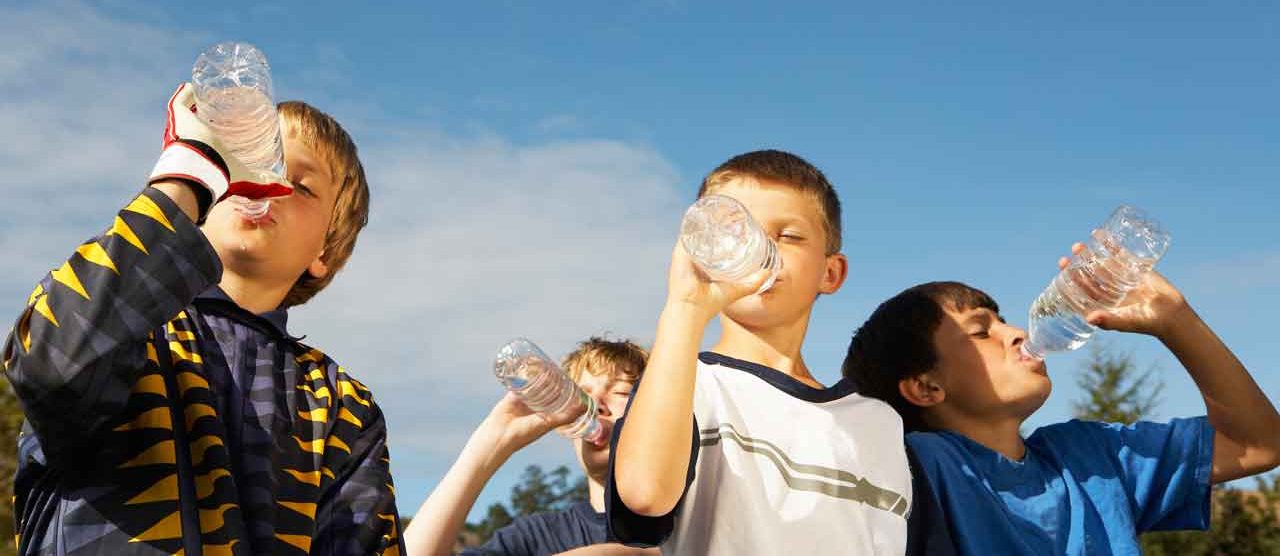Toxic Chemicals in Childhood

How to minimize kids’ exposure to bisphenol A (BPA) and its replacements — as well as a group of chemicals called phthalates.
Childhood comes with a lot of precautions these days. Helmets and kneepads? Check. Filtered water? Check. A cell phone for your eight-year-old? Check.
Toxic chemicals are another issue our grandparents might have laughed off. But, scientists say, you should probably add this worry to your list.
YOU MIGHT ALSO LIKE: Lead, Mercury, and Pollution Hazards for Children
Bisphenol A (BPA) and its replacements — as well as a group of chemicals called phthalates — are the target of increasing concern among researchers. While our bodies are very effective at excreting bisphenol and phthalates, that doesn’t make these chemicals harmless, doctors say.
In a consensus statement published in 2015, a group of international obstetricians and gynecologists warned of exposure to toxic chemicals — particularly during developmentally vulnerable periods in pregnancy, infancy, and childhood. “Even small exposures during a window of vulnerability can trigger adverse health consequences that can manifest across the life span of individuals and generations,” the group said.
Bisphenols and phthalates (pronounced thay-lates) are getting the most attention. The vast majority of Americans have detectable BPA in their bodies. BPA and its common replacement, bisphenol S (BPS), are found in many plastics. They’re also ubiquitous in receipts printed on thermal paper and used to line many canned foods. Even some dental sealants contain BPA.
While BPA has been linked to diabetes, cardiovascular conditions, obesity, and liver dysfunction in adults, it could be even more dangerous for children and adolescents because their bodies and brains are still developing. Researchers believe BPA alters human metabolism and changes the way the body stores fat, in addition to its hormone-disrupting and other health effects. Studies have linked BPA exposure in kids to obesity and insulin resistance as well as lung and kidney dysfunction.
But there’s another problem: the chemicals replacing BPA may not be any safer. Many manufacturers have voluntarily removed BPA from products, but often they’ve simply replaced it with another bisphenol. A 2015 review found two such alternatives, bisphenol F and bisphenol S, are as “hormonally active” as BPA and have similar endocrine-disrupting effects. Another study linked the two replacements to increased blood pressure in kids and teens.
Meanwhile, phthalates, yet another environmental contaminant linked to health problems in children, are used to make plastic less brittle and harder to break. They’re as ubiquitous in Americans as BPA — nearly everyone has them in their body in measurable amounts. Phthalates are also classified as endocrine disruptors and have been linked to insulin resistance in adolescents and high blood pressure in kids, as well as kidney dysfunction throughout childhood.
YOU MIGHT ALSO LIKE: Is fish oil worth taking?
While science works out the inevitably complex health effects of environmental toxins, it’s likely wise to stay safe. To avoid BPA and its replacements, parents can take a few precautions:
- Don’t microwave in plastic containers, which can leach chemicals into food. Use glass or ceramic instead.
- Limit soda intake, and if kids eat lunch at school, talk with your school about the safety of the canned ingredients they’re using. One study found BPA levels associated with soda drinks and school lunches, as well as restaurant and takeout meals, though canned tuna and bottled water were fine. Eat at home when you can, and if you eat out, frequent establishments that use local, organic ingredients as much as possible.
- Switch to stainless steel, which is safer than tempered glass, for kids’ food containers. (Klean Kanteen and other manufacturers even offer stainless steel sippy cups and baby bottles.)
- Don’t let your children touch or play with store receipts (and try not to touch them yourself, since they’re no better for your health either). Whenever possible, simply decline receipts.
- Try to avoid plastics in toys or other items kids might have in their mouths. Check out product safety with The Ecology Center: this environmental advocacy group has a searchable database of hundreds of items, including toys, it’s tested over the past decade.
- Avoid canned foods. While a number of food manufacturers have voluntarily stopped using BPA in their cans, it’s unclear what they’re replacing it with. (See this March 2016 report from The Ecology Center for tests of 29 national canned-food brands.)
Avoiding phthalates may be more complicated. While phthalates are found in many common household products like shampoos and lotions, this may be safe: one study found no increase in phthalate levels in children linked to these items.
Instead, high-fat diets, particularly when the fat came from meat and dairy products, were linked to the highest levels of childhood phthalates in the study. To avoid them, you might try choosing food from local, minimally processed, and organic sources when you can.
Updated:
April 07, 2020
Reviewed By:
Christopher Nystuen, MD, MBA